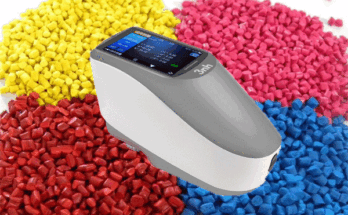Proper labeling and careful handling are critical to ensuring the safety of your fragile items during a move. Without clear labeling, movers or even yourself may mishandle delicate items, leading to potential damage. This topic covers the best practices for labeling boxes containing fragile belongings, as well as strategies for ensuring they are handled with extra care throughout the moving process. Now let’s look at what the professionals like Safe Ship Moving Services say.
Importance of Clear Labeling
Labeling your fragile items correctly is essential for several reasons. It alerts movers, family members, or anyone handling the boxes to be extra cautious, ensuring that these items are not stacked improperly or handled roughly. Here’s how to ensure your fragile items are marked for safety:
1. Use Clear and Bold Markings
Ensure that every box containing fragile items is labeled with large, bold letters that say “FRAGILE” or “HANDLE WITH CARE.” Write these labels on multiple sides of the box—preferably on the top and at least two opposite sides—so the markings are visible no matter how the boxes are positioned. If possible, use red or another noticeable color to make the labeling stand out.
2. Include Detailed Handling Instructions
In addition to marking the box as fragile, provide specific instructions such as “This Side Up” or “Top Load Only” to ensure that the boxes are handled correctly. For instance, artwork or picture frames may require upright storage, while dishes may need to remain flat to avoid shifting.
Strategy: Use pre-made “fragile” stickers or tape for an even clearer visual cue. These labels are bright and catch attention, making it easier for movers to identify which boxes need extra care.
Handling Fragile Items
Even with proper labeling, it’s crucial that fragile boxes are packed, loaded, and handled properly. Whether you’re working with a professional moving company or doing the move yourself, you’ll want to ensure that fragile boxes receive the right treatment.
1. Communicating with Movers
If you’re hiring professional movers, take time to communicate with them about which boxes contain fragile items and require extra care. While labeling is important, directly telling the movers which boxes need special handling will reinforce the need for caution. Consider guiding the movers in how you’d like fragile items loaded, such as keeping them on top or in a specific area of the moving truck.
Strategy: Create an inventory of all your fragile boxes and items. Share this list with the movers to ensure they are aware of every delicate item that needs special handling. This also helps when you arrive at the new location, so nothing is misplaced.
2. Loading Fragile Boxes in the Moving Truck
When loading fragile boxes into the moving truck, their placement is key to preventing damage. Always pack fragile items on top of heavier boxes, never underneath. Ensure that there is no heavy weight pressing on fragile boxes during transport. Consider keeping them in a designated “fragile-only” section of the truck to minimize movement and avoid accidents.
– Top Load Only: If you’re stacking boxes in the moving truck, make sure that fragile boxes are loaded on top of sturdier, non-fragile items. Avoid placing heavy objects on top of boxes marked fragile to prevent crushing.
– Securing Fragile Boxes: Once loaded, fragile boxes should be secured with straps or cushioning to prevent them from shifting during transit. Even a slight movement during transportation can lead to damage if the boxes are not stable.
3. Unloading and Unpacking Fragile Items
When unloading fragile items at your new home, make sure they are handled with the same level of care as during the packing and loading process. Ideally, fragile boxes should be unpacked early in the process to avoid the risk of them being mishandled in a busy, cluttered space.
Strategy: Have a designated room or area where fragile boxes are placed upon arrival. This way, they’re not in the way during heavy lifting or furniture assembly and can be unpacked safely in a controlled environment.
Best Practices for Labeling and Handling
1. Double-Check Labels: Before sealing each box, double-check that it is properly labeled. Make sure the markings are visible from multiple angles and include any special handling instructions. Clear labeling is your first line of defense against accidents.
2. Monitor the Move: If you’re working with movers, stay involved throughout the moving day. Politely monitor how they are handling the fragile boxes, and ensure they are placed in the moving truck and unloaded properly. Sometimes extra oversight can prevent careless mistakes.
3. Use Technology to Track Boxes: In more complex moves or for businesses, consider using barcodes or tracking labels on your boxes to keep track of where each fragile item is during the moving process. This can give you peace of mind that your valuable belongings are accounted for and treated with care.
Conclusion
Proper labeling and handling are essential for protecting your fragile items during a move. By clearly labeling your boxes, communicating with movers, and ensuring that fragile items are packed and loaded correctly, you can minimize the risk of damage. Taking the time to implement these strategies ensures that your delicate belongings will arrive at your new location safely, giving you peace of mind during the moving process.





